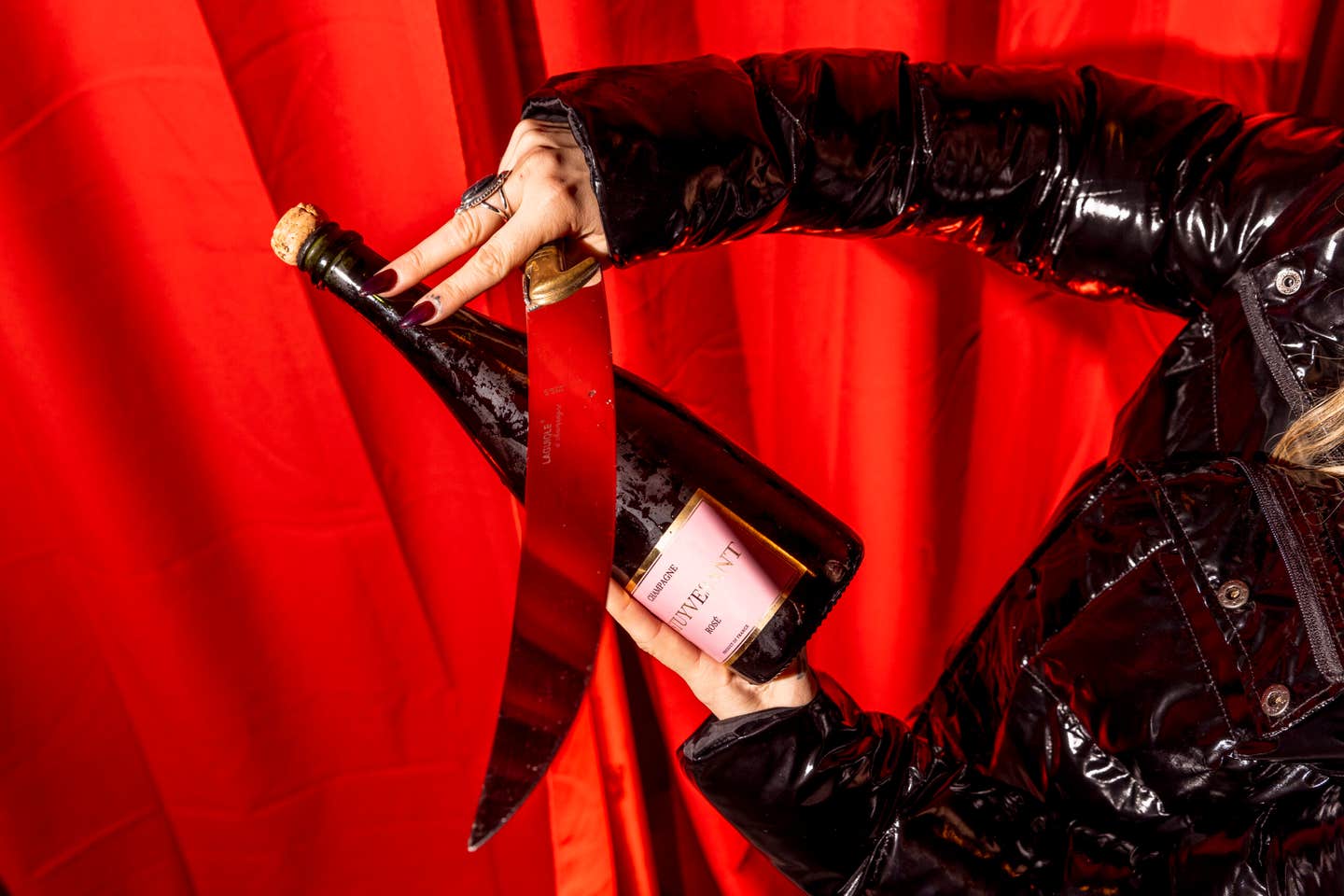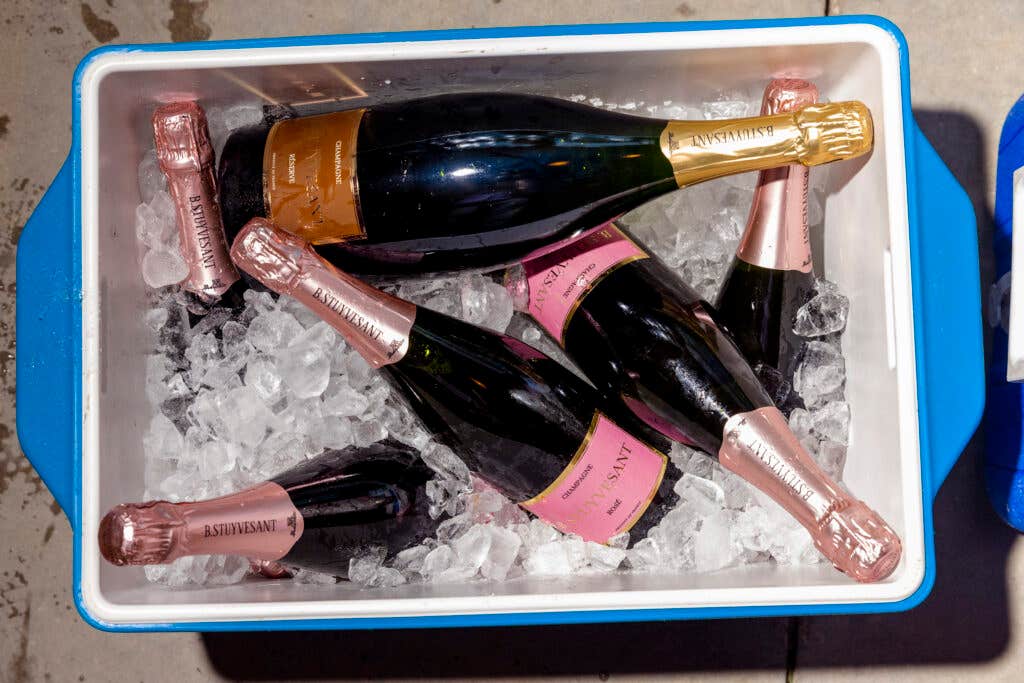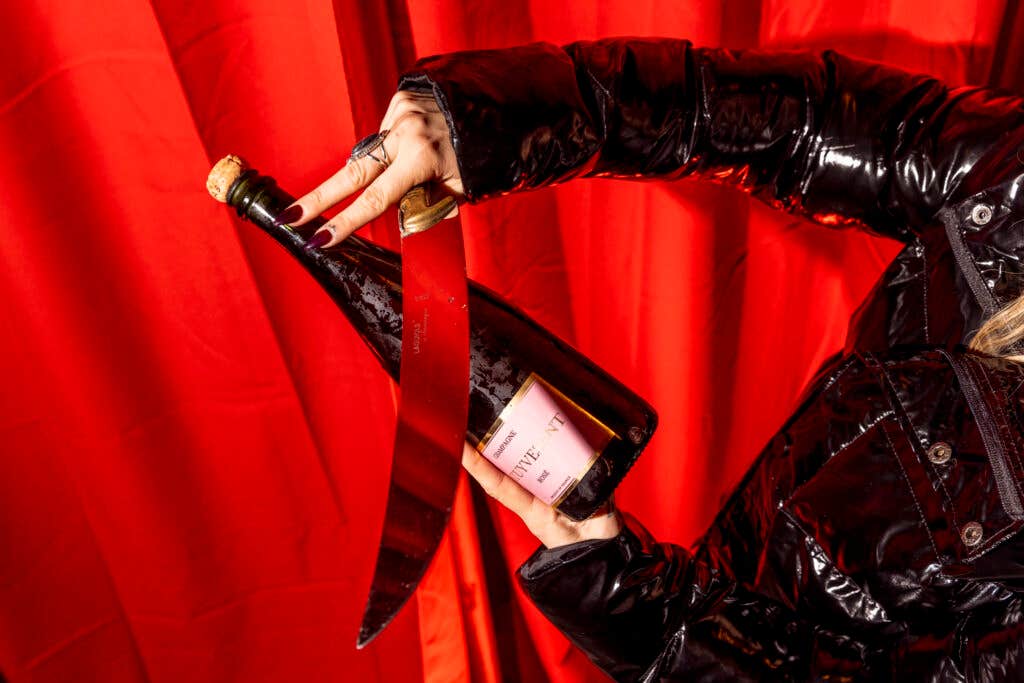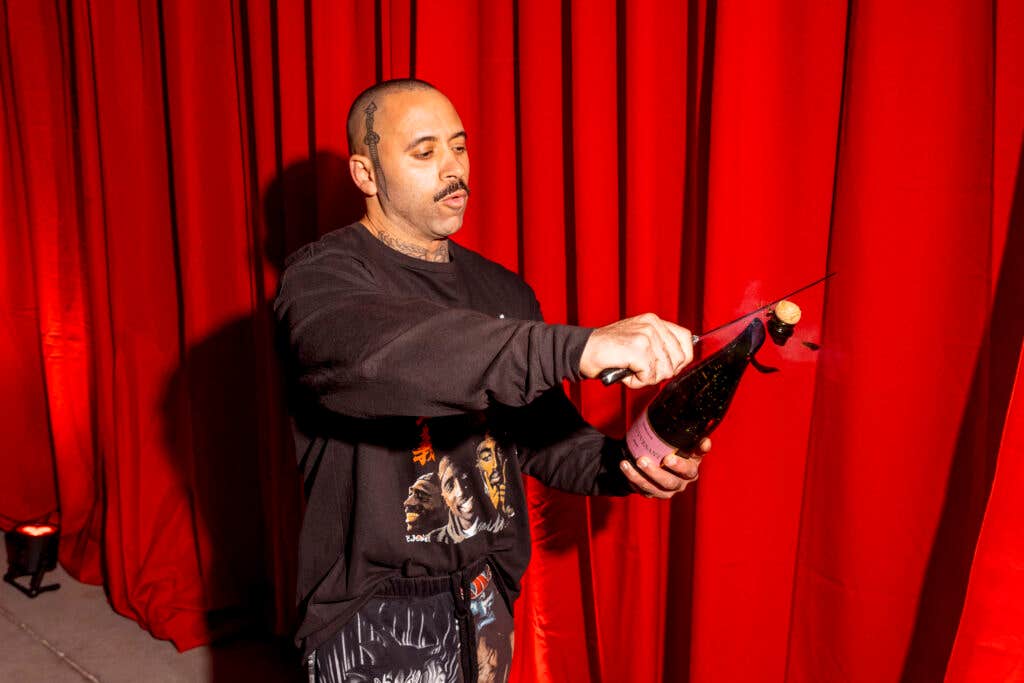
How To Open Champagne Like A Swashbuckling Sommelier
Grab an ice-cold bottle of bubbles and your favorite sword and you’re in business.
We’ve all got that quintessential life-of-the-party-type friend, in one form or another—or maybe that friend is you, in which case you’re in exactly the right place. For SAVEUR, it’s our trusty Champagne crew, the Wine Migos, who joined us at the Charleston Wine and Food Festival earlier this month for a live bottle-sabering marathon at our Street Eats event—accompanied by some of the best Asian food in the country, in true Migos fashion. Now we bring you the complete beginner’s guide for how to open Champagne with a sword, otherwise known as sabrage—the only party trick you’ll ever really need.

Inside the SAVEUR tent, the Migos (Kelvin Uffré, Marquis Williams, Oscar García Moncada, and Mozel Watson) took turns lopping off cork after cork of B. Stuyvesant Champagne well into the evening alongside the brand’s founder, Marvina Robinson. Champagne Delamotte flowed freely for all throughout the show, with more than a few ending up under the knife themselves, as no bottle of bubbles was spared from the saber’s blade that night.

Uffré, a longtime fan of the art of sabrage, describes the rush that comes with performing it for a crowd: “The theater of sabering is electric, but what’s really dope is the underlying irreverence,” he shares. “There’s something a little savage, raw, [even] vulgar about it, not to mention the power in taking an object that’s put on a societal pedestal and chopping its head off.”
While sabering can be done using a variety of tools—some pros are known to get the job done with unconventional items like iPhones, shoes, and even wine glasses—it’s generally best to start out with the traditional long, sturdy knife to be safe. Here’s everything you need to know about sabering a bottle of Champagne, whether for a crowd or your own satisfaction (or both).
Put It On Ice.

Chill your bottle of Champagne, and chill it well. For a safe and successful sabering, the bottle must first be nice and cold—between 38 and 42 degrees Fahrenheit, to be exact. Ideally, you’d keep the bottle fully submerged (neck and all) in ice with a bit of water for at least one hour; if that’s not possible, refrigerate the bottle until it’s very cold (that’s three to four hours for a standard 750 milliliter bottle, or longer for magnums or anything larger), then pop it in the freezer for 15 minutes or so. You can use a contactless thermometer to keep track.
In a time crunch? One of our favorite flash-chilling tricks involves drenching two to three paper towels in water before wringing them out and wrapping each one around a bottle of bubbles and placing it in the freezer. From there, let the bottle chill until the paper towel is frozen solid (about 30 to 45 minutes, depending on the freezer’s temperature and whether you’re opening by hand or with a saber). Just be sure to check on the bottle periodically after the 30-minute mark using your thermometer, as you’ll want to hit the suggested temperature range without allowing the wine to freeze.
Clear the Tarmac.

Remove all of the foil, cage, and metal cap before you begin to ensure a clean, obstruction-free surface for your saber. Think of the bottle as a jetway and your sword (or other preferred tool) as a plane ready to smoothly taxi its way up to the lip, where the cork and the glass encircling it will take off in tandem with the edge of the saber.
Prevent Projectiles.
Be sure to keep your thumb firmly placed on the cork once the cage is removed. There’s a ton of pressure inside an unopened Champagne bottle, and the last thing you want is for the cork to spontaneously pop—not only will you lose your precious opportunity to saber, but you might take an eye out in the process. Secure the cork with your thumb until you’re totally ready to saber.
Find the Seam.

Look for the bottle’s seam—the faint line that runs along its length—and use it as a guide for where you’ll want to align your saber, a key factor in ensuring clean, safe cork removal (and more wine left in the bottle once you’re done, especially if the bottle is cold enough).
The Final Countdown.

Hold the bottle at the base with your non-dominant hand; hold the saber in your dominant hand. Position the blade’s blunt edge angled forward against the bottle’s seam, then get ready for the main event. You’ll need to work quickly once you remove your thumb from the cork, which could potentially pop on its own; also make sure that the bottle is pointed away from any bystanders. When you’re ready, count slowly to three, moving the saber gently against the length of the bottle—again, along the seam—gently on the one and two, then adding a bit more force on the three to remove the cork.

Most importantly, throughout the process, remember to be safe and to have fun. Sabrage is about gathering, entertainment, irreverence, and excess—a “perfect” saber is one that involves a clean cut and no injuries, both of which come with taking the proper steps we’ve outlined (nobody wants a bottle to shatter in their hands). If you lose some wine in the process, well, c’est la vie.
Keep Reading
Continue to Next Story










